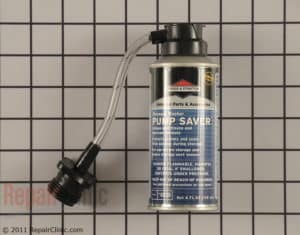You can winterize your pressure washer and keep it running smoothly next season by following a few simple maintenance steps before storing it for the winter. Checking and cleaning the air and fuel filters, changing the oil, rinsing the water inlet screen, and adding an antifreeze and lubricant formula all help protect vital components from freezing and corrosion. Taking the time to complete these quick tasks ensures your pressure washer remains in top condition, ready to deliver reliable performance when warmer weather returns.
Here’s how to winterize your pressure washer:
1. Review your pressure washer owner’s manual for care instructions specific to your model.
2. Install a clean air filter.
The air filter must be clean in order to effectively prevent dirt, dust and other harmful debris from entering the engine. Every four hours of use, clean the filter. Every 100 hours of use or every three months, replace it. Pleated, paper air filters cannot be cleaned without damage so they should be replaced. Foam air filters can be cleaned with hot water and a small amount of dish detergent. When the filter is completely dry, saturate it with engine oil before reinstalling it. NOTE: Do not use oil on a foam filter if your model also uses a paper element filter.
3. Clean the fuel filter (following the owner’s manual’s instructions, as the procedure does vary from model to model).
4. Check the oil.
Replace the oil if it becomes too dark – or at least every 50 hours of use or once per season.
5. Clean the water inlet screen.
Check the water inlet screen for dirt and debris buildup. Rinse it with water. Allow it to dry thoroughly before returning it to the pressure washer. If the screen is damaged at all, replace it.
5. Inspect the tires.
Check the tires for wear or damage and replace if necessary.
6. Add an anti-freeze and lubricant formula to fresh fuel. My favorite is Briggs & Stratton Pump Saver. This will keep internal parts lubricated and prevent pump cracking during storage.
7. Store in a clean, dry location, far away from open flames or sparks.
Something wrong with your pressure washer? Check out RepairClinic.com’s troubleshooting and repair help information for pressure washers. Enter your pressure washer’s model number for a complete list of replacement parts.
Related content
How to prevent a sprinkler system disaster this winter
How to prep your snowblower for winter
11 easy ways to prep a lawn mower for winter storage

Comments are closed.